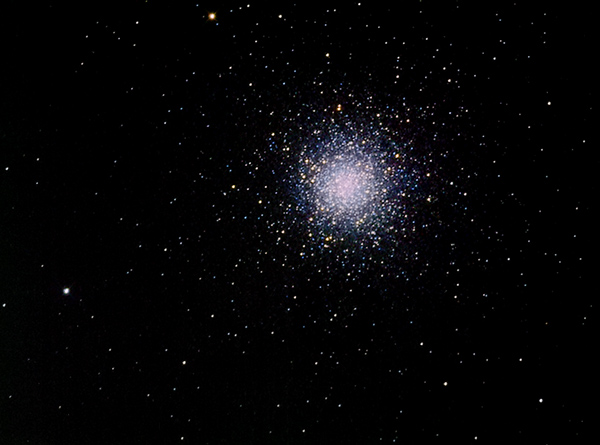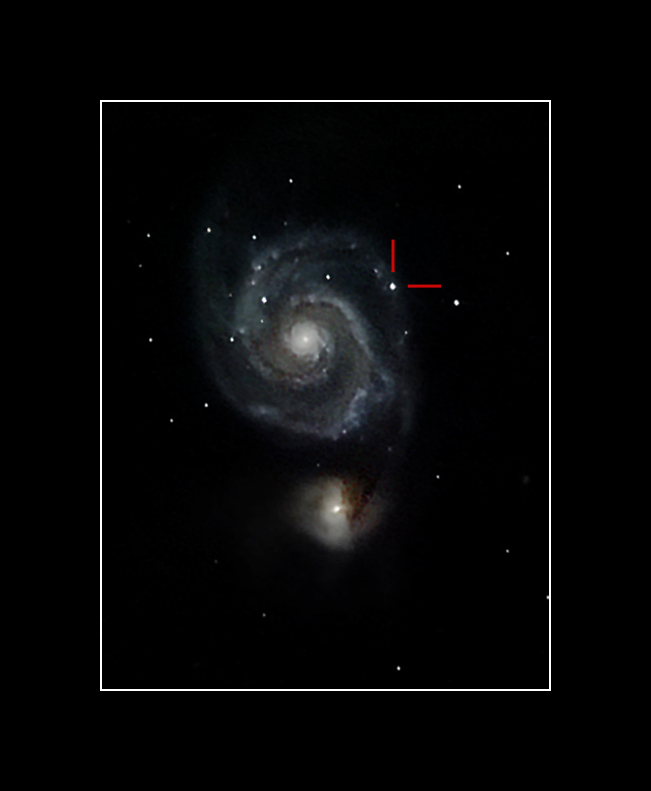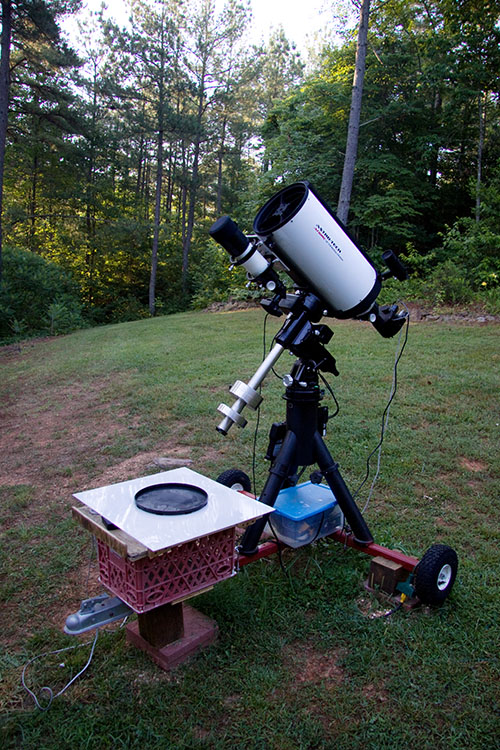|
6/10/11 (cont'd): At the end of twilight, clouds took shape overhead, rained briefly, then moved out slowly to the east. While Amy and I went for a walk through the neighborhood, I kept an eye on the clearing sky. Big orange Moon, haze. A few bright stars. When we got home, I uncovered the telescope and found approximate focus on a random bit of sky. The ST2000XM with CFW8a is barely extended in the focuser with 2, 1-inch extension rings in place. Perfect. I lined up on Arcturus -- brilliant on the screen! -- recalibrated and slewed to M3 which was near the zenith. It's also an homage to a night decades ago with a 26-inch Clark refractor at the University of Virginia (another sight on the short list of astronomy's moments). Here's the first-light image for the 10-inch Richey-Chretien:
Messier 3, a globular cluster in Canes Venatici Collimation looks good out of the box; there's no obvious tilt in the focuser (see below). I need to check the polar alignment, because 4s guiding increments were too long (!). Guiding with 1 second exposures worked dramatically better. The subframes show FWHM stars in the 2.8 - 3.0 arc second range which is much better than I expected for a first look. I did not use the six, 60s L frames which I gathered in unbinned mode, nor did I use the six, 60s L frames shot 2x2. With this image in the can, I slewed to M51 which was much hazier owing to increased airmass. A set of 300s 1x1 images worked as well as could be expected through the murk, but I'm counting on having something better of M51 soon, maybe tomorrow night.
6/13/2011. You're not supposed to have this much trouble putting the target on the chip when the telescope is carried on a top-tier mount. Something is out of adjustment or confused. The experience wasn't helped by a flakey USB connection to the guide camera which kept locking up PHD Guide and making me resort to Task Manager to clear and restart it. I may need to take the DSI apart again and see if I can make this connection more secure. In the meantime, I've got the connector and cable tightly tensioned tonight to see if I can keep it from wiggling out of contact again. Anyway, it took me almost an hour to get Arcturus, then M3, then M51 lined up in both the guide scope and the imaging scope. I wanted to photograph M51 with its supernova, but on this moony, murky night, I didn't intend to try for an ultimate, deep portrait to see what the Ritchey can do. Rather, I wanted to see if a fairly casual set of exposures could do something gratifying. Yessir, although guiding is a little off:
M51 with SN 2011dh
Then I took color data of M13 (the slew landed it close to the middle of the chip) and luminance for the rest of the night. Here's the luminance data (for some reason, the color comes up unpleasantly cyan and yellow; need to remix that):
M13, a globular cluster in Hercules
Some notes on the night's experiences:
For the record, here's the outfit when I went out just after sunrise to close up shop. It's in A-P park 3 position waiting to be covered. Note the over-sized flat-making acrylic on the
|
:: top ::
© 2011, David Cortner



